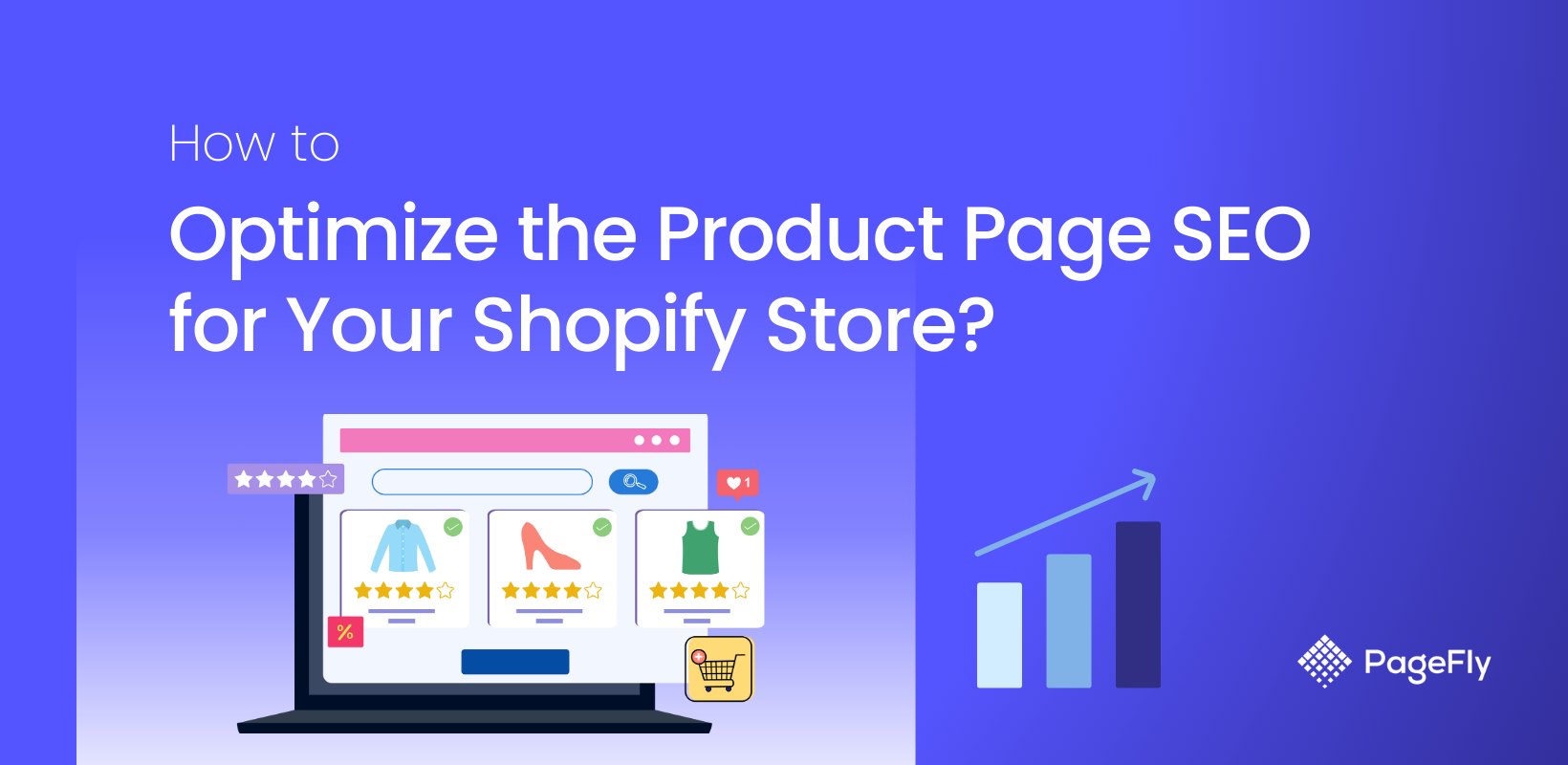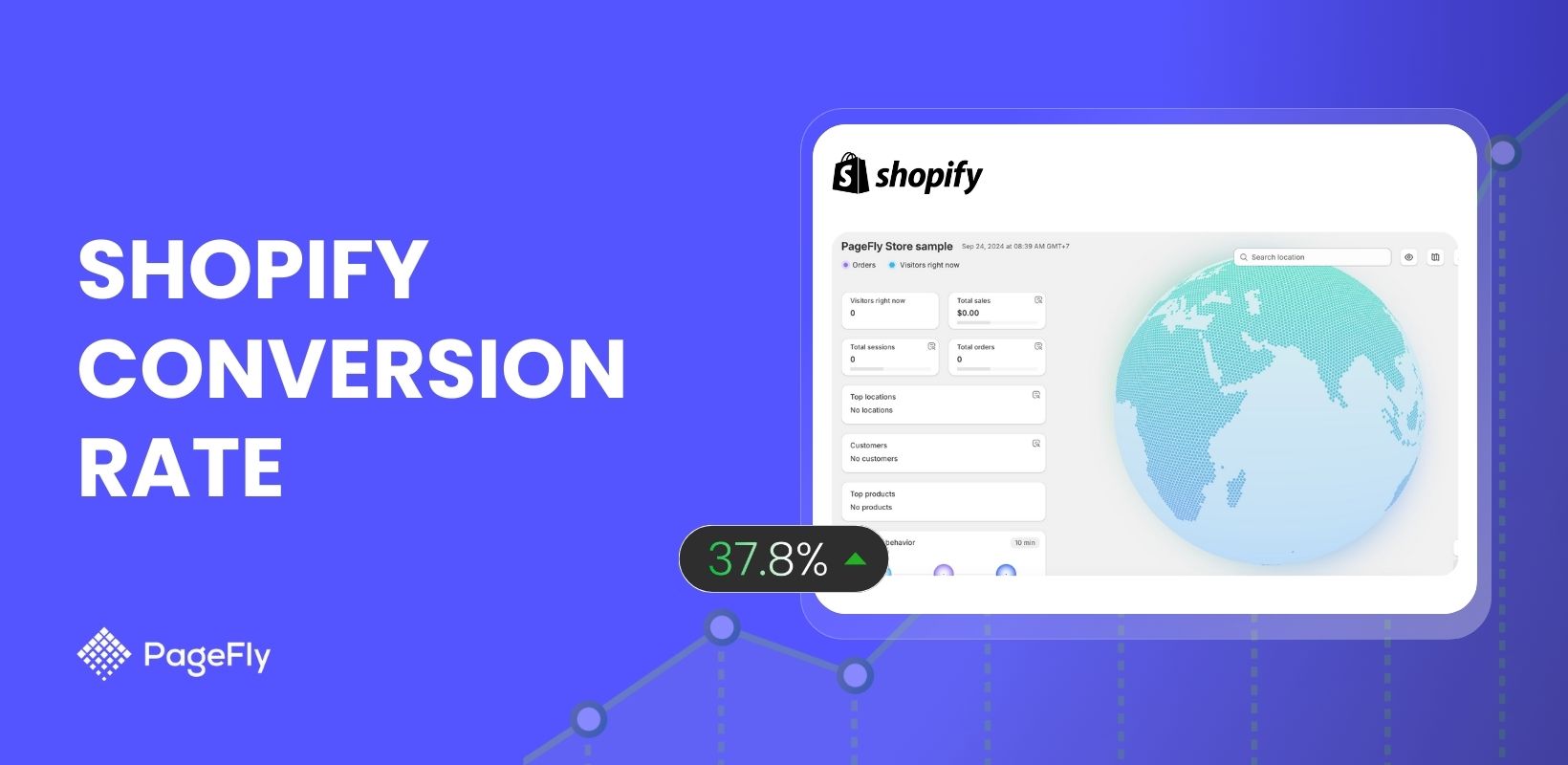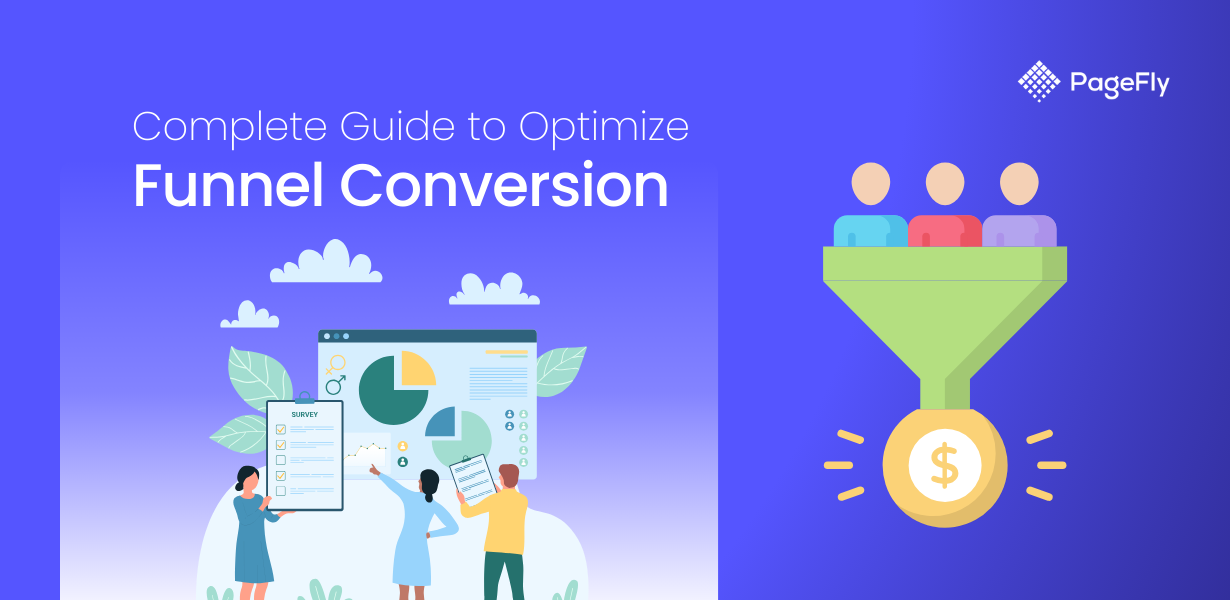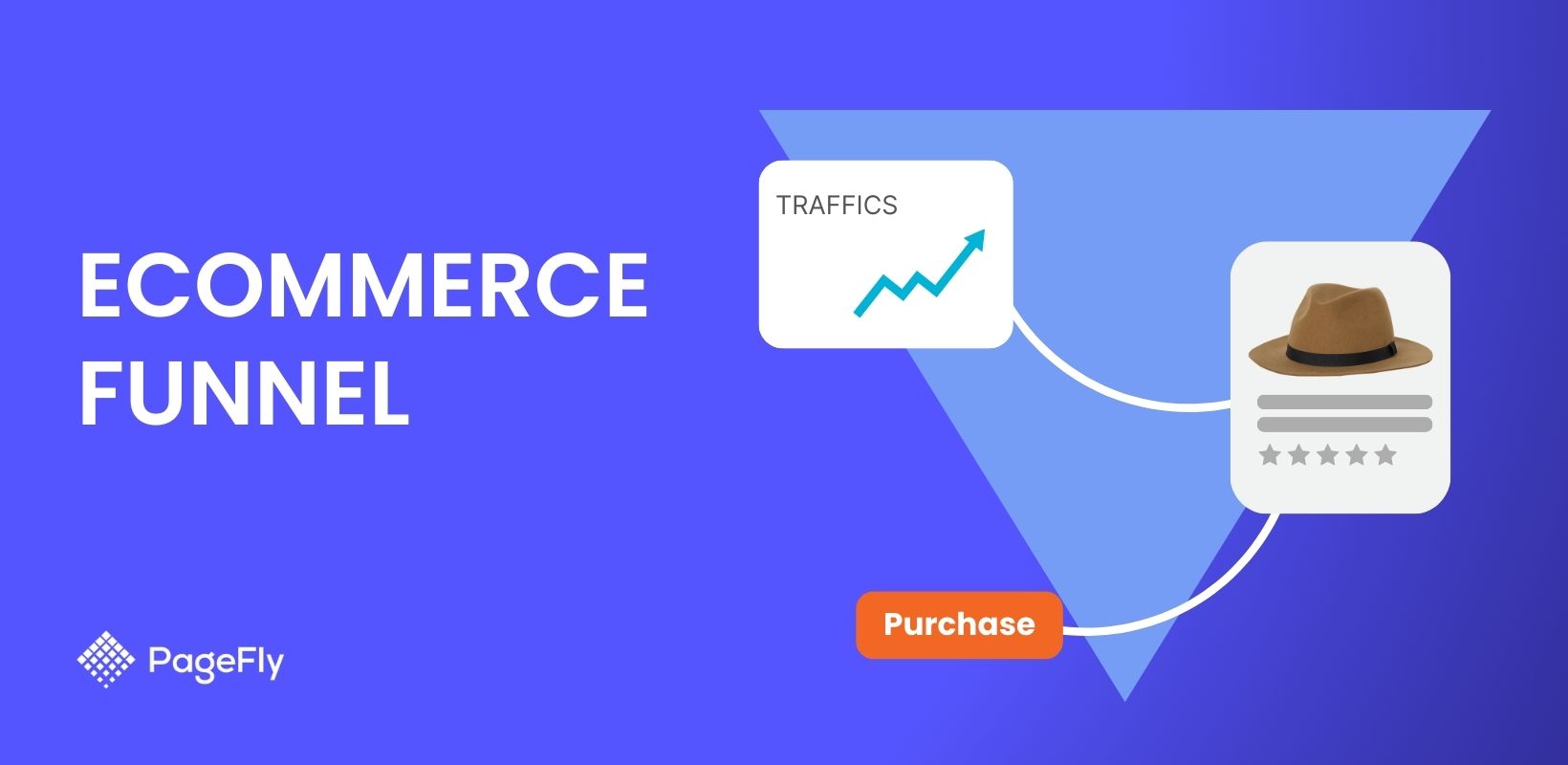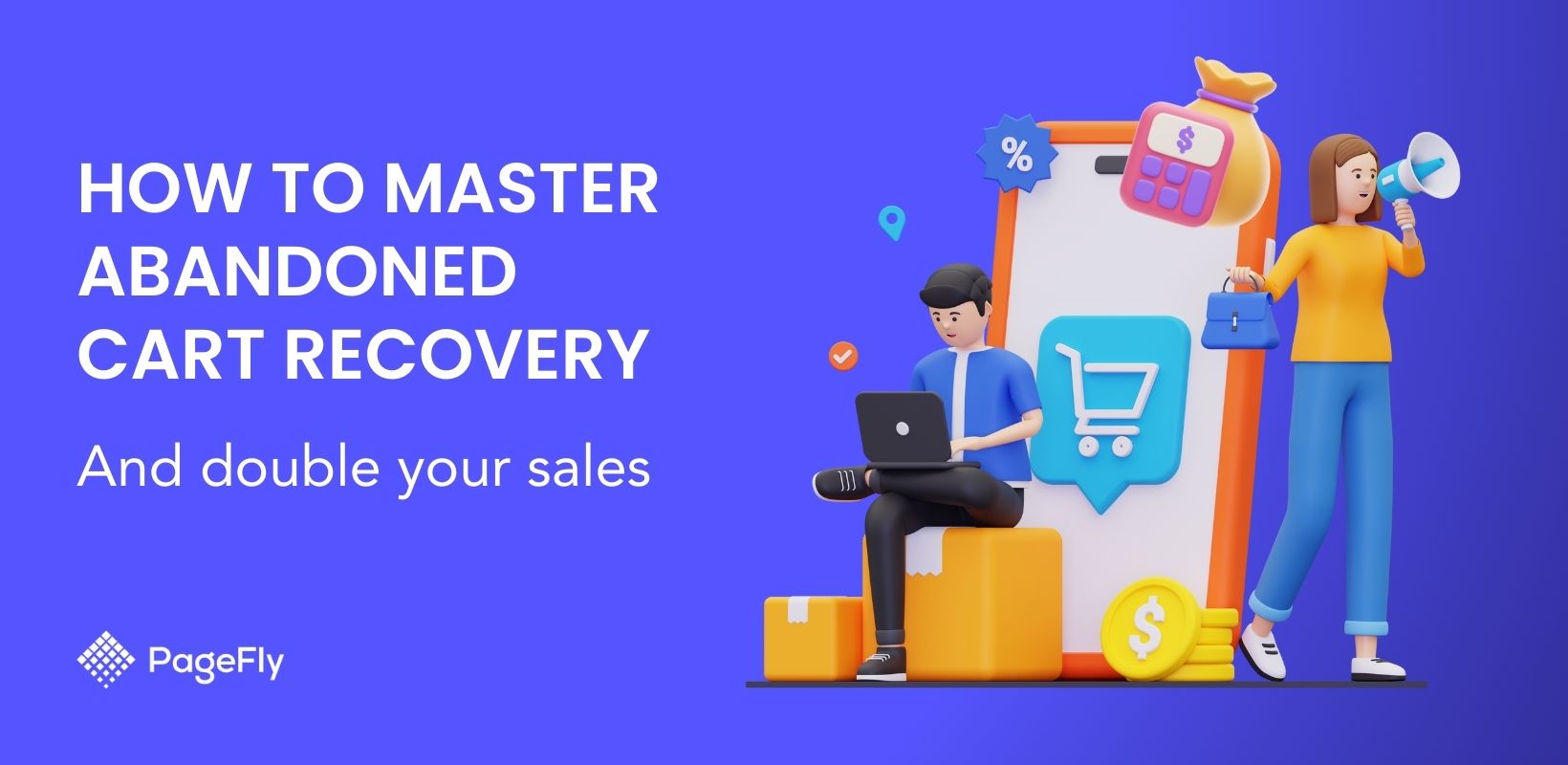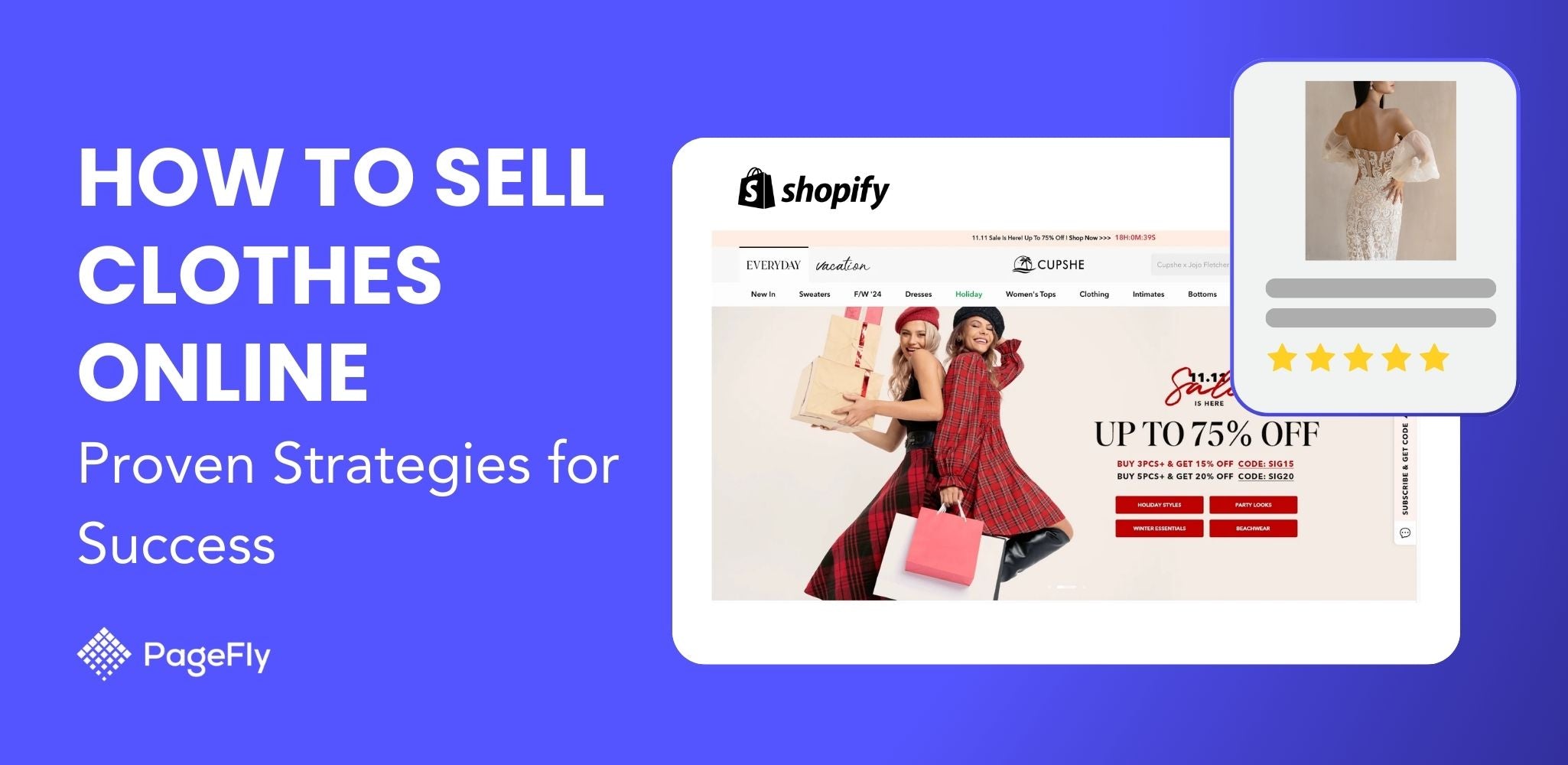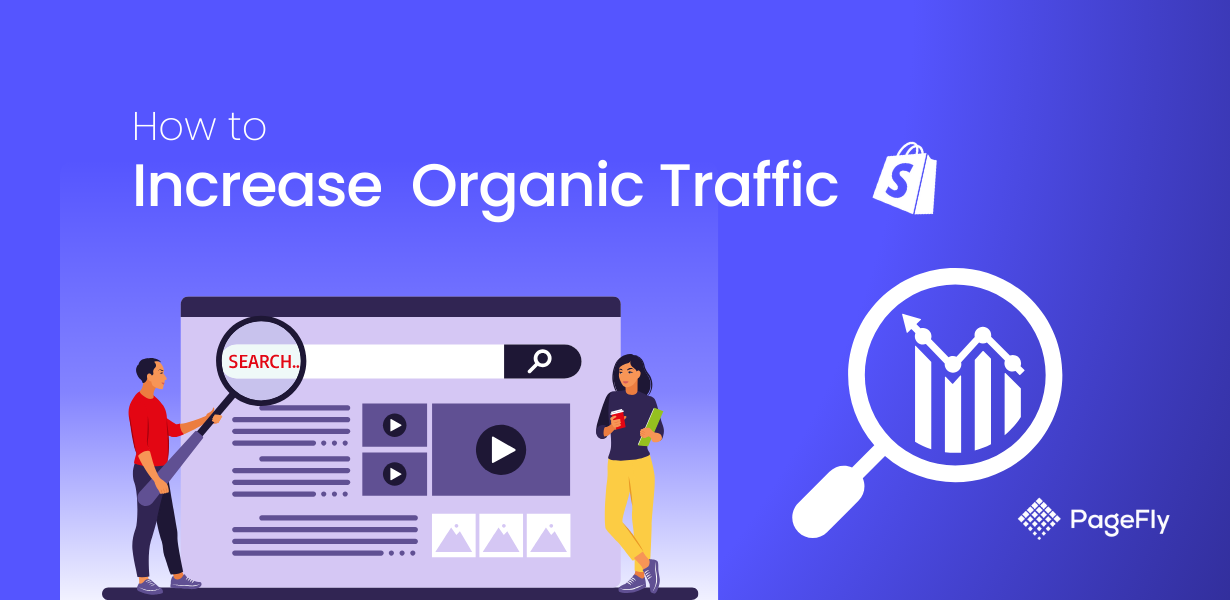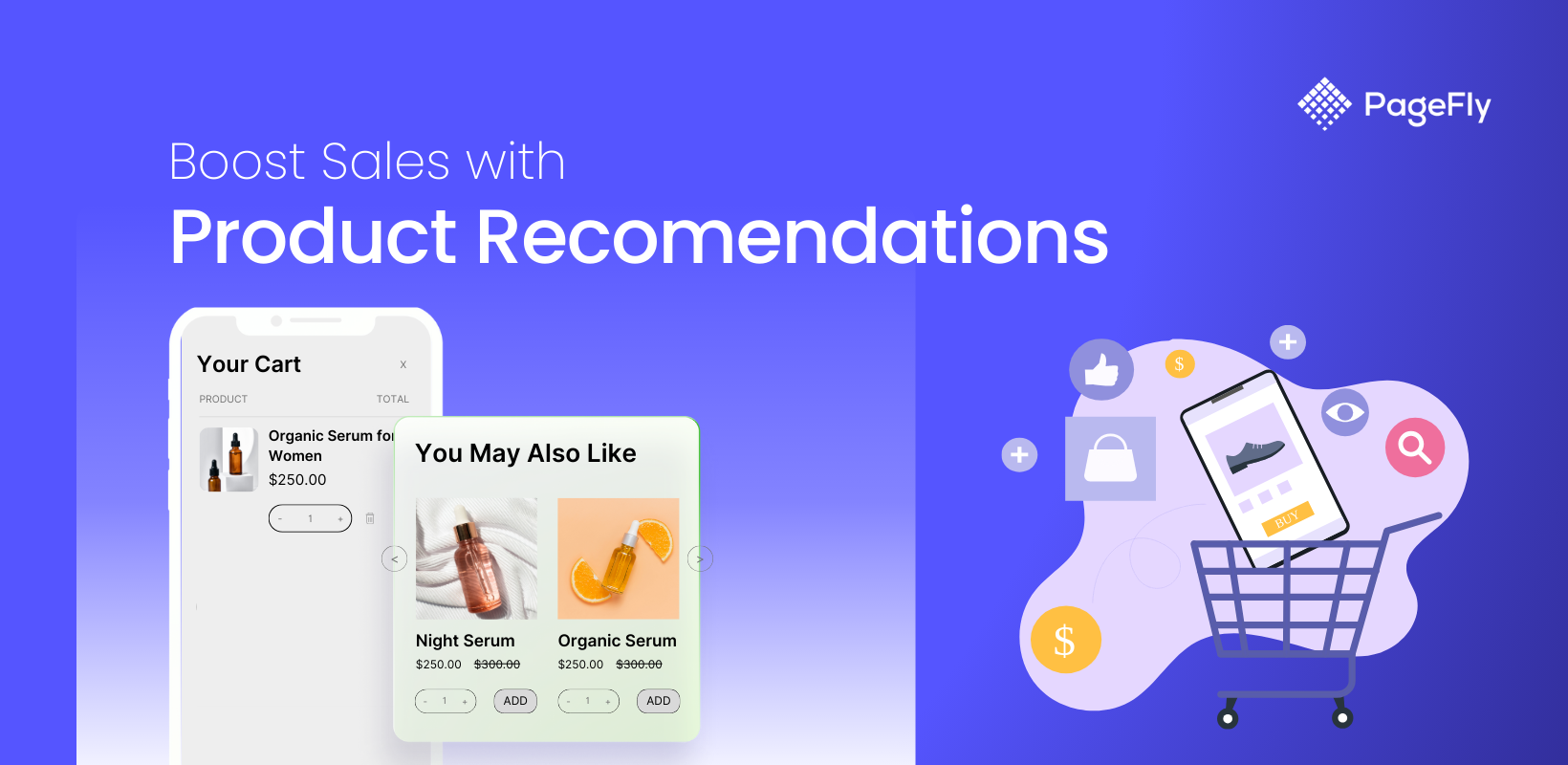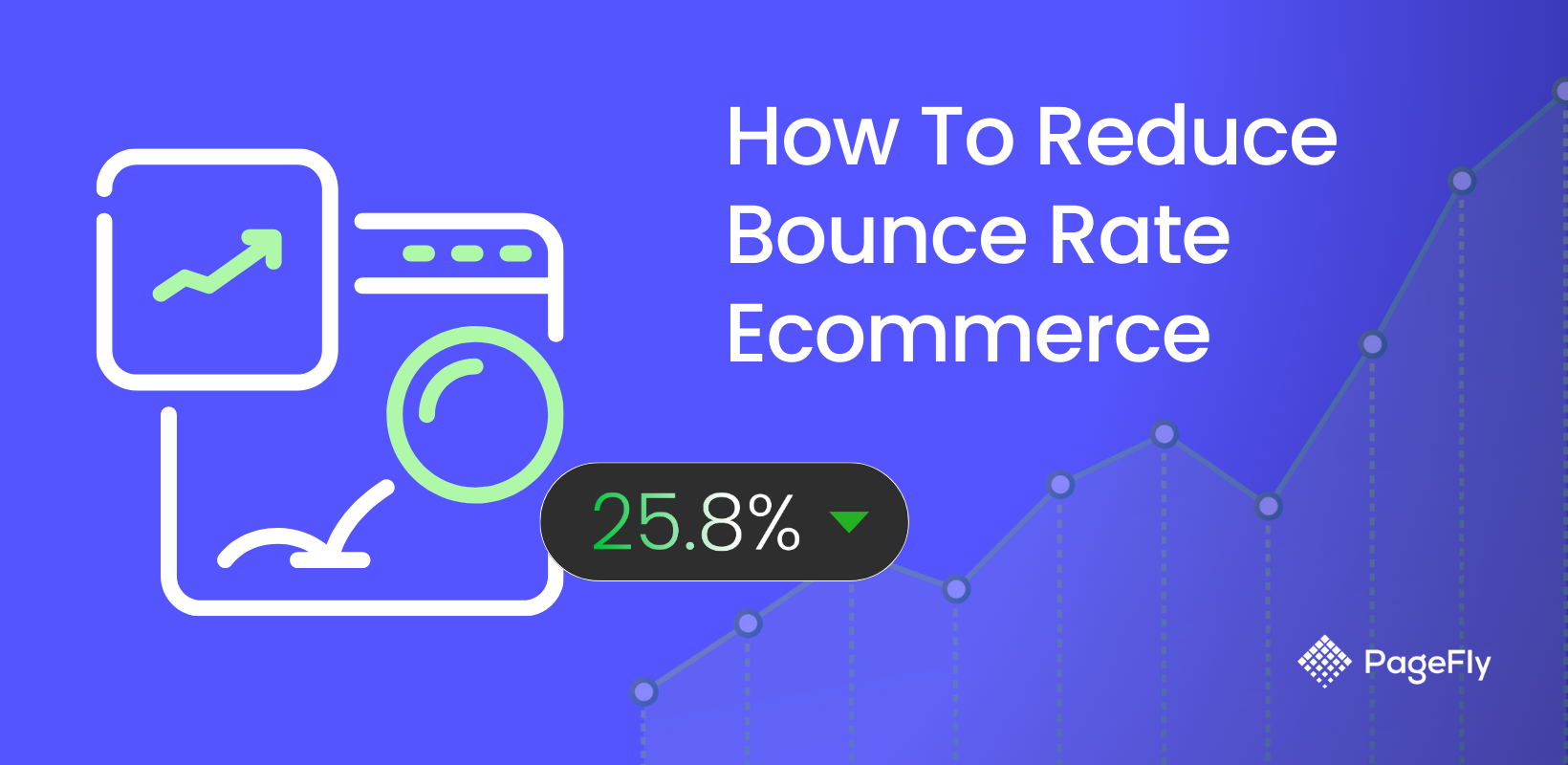As Shopify merchants, we think about a lot of ways to get more traffic and increase conversion rates. With the traffic acquisition, for most merchants, Facebook or Google Adwords comes to mind. As for the landing pages for our Shopify business, it’s the Shopify product page customization.
However, what if we are just getting started with the business and on a limited budget? So next we’ll think about Google organic traffic. That’s what we’ll talk about in this blog post. To be precise: how to optimize Shopify product page SEO to get more organic traffic.
What is Product Page SEO?
Product page SEO refers to the process of optimizing individual product pages on an e-commerce website to improve their visibility and ranking in search engine results pages (SERPs).
The goal of e-commerce product page SEO is to ensure that each product page is easily discoverable by search engines like Google and appealing to potential customers, which can lead to increased organic traffic and conversions.
Why Product Page SEO is Crucial for Shopify Merchants?
Optimizing product page SEO is a critical strategy for Shopify merchants to succeed in the competitive e-commerce space. By focusing on SEO, merchants can boost their product visibility, attract more qualified traffic, and ultimately drive more sales. There are 4 outstanding benefits of product page SEO enhancement for Shopify merchants:
- Drives Organic Traffic: Attracts more visitors to your Shopify store without relying solely on paid advertising, reducing customer acquisition costs.
- Enhances User Experience: Improves page content, loading times, and navigation, creating a better shopping experience that can lead to higher conversion rates.
- Attracts High-Intent Buyers: Optimized product pages attract customers who are actively searching for products like yours, increasing the likelihood of conversions.
- Boosts Sales and Revenue: Higher visibility and better user experience can directly lead to more sales, contributing to overall business growth.
Before Optimizing Your Shopify Product Page SEO - Start With The Keywords Research
Product page SEO starts with keyword research. As the product/service owner you’d know well about the products you’re selling. You even can list the most popular keywords that the potential customers can search for finding the information related to the product in your niche.
However, to do keyword research effectively, it’s good to use SEO tools. For the keyword research, Keywordtool.io might be a good tool to start with.

After using this tool, you have a list of keywords. So now you have the list of keywords that potential customers are interested in. In our case let’s take the example with optimization of the Shopify Product page for the keyword “genuine wood watch”.


Product Page SEO Best Practices
Optimizing product page SEO involves several key components that together enhance its visibility and attractiveness to both search engines and users. Understanding these elements is the first step toward achieving better rankings and conversions.
Edit SEO Shopify for Product Description, Product Page Title and URL Structure
It’s quite important to tell Googlebot what your Shopify product page is about. The first thing you’ll have to do regarding optimizing product page SEO is related to the Title of the product page and in the product description content.
Here are 12 AI-powered Tools for Generating Hundred of Product Description at ease
In the content, you have to mention the targeted keyword in the first paragraph and the H2 HTML tag. Just mentioning in these 2 places is enough because we don’t want to be "keyword stuffing' by just bombing keywords in the content.
Whether you just think about the customer first and whether your content creates a good user experience or not.
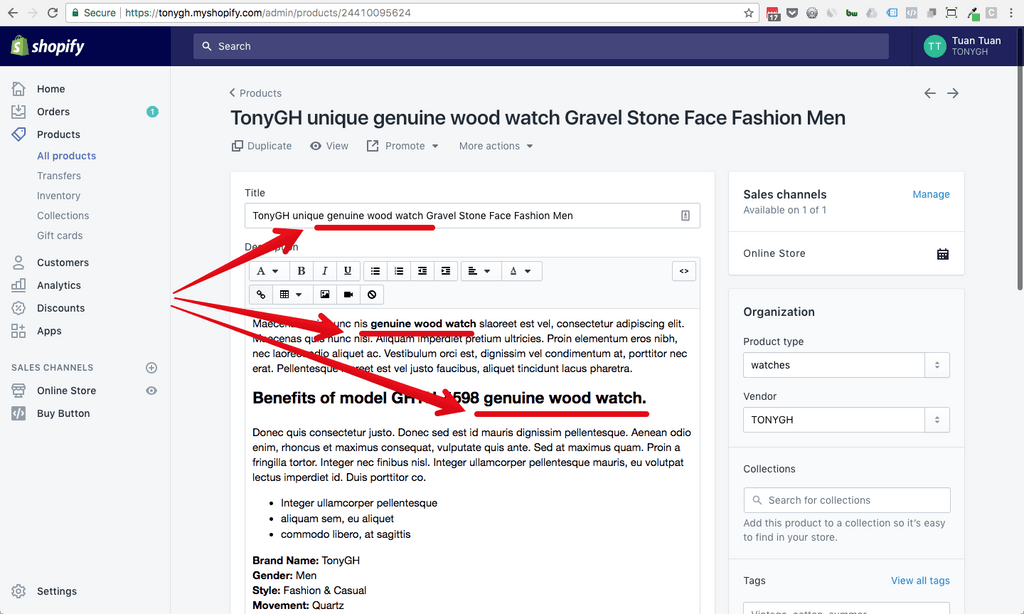
Going further, keep in mind to mention keywords in the Tags section. The purpose of tags is to help users find pages with a similar keyword or keyword phrase. In our case, when users click on “genuine wood watch”, it’ll show all product pages labeled with that tag.
Enhance Product Collection and Tags
Each product belongs to a certain product collection. So, in this case, I have to make my wood watch a product in the collection “Wooden Watches”. From an SEO point of view, it’ll boost the internal linking which affects the overall product page SEO.


Optimize Product Image Size & ALT text HTML tags
Even Shopify recommends merchants to fill the content with image alt text with the hint near the product image. By filling the content with the targeted keyword, you’ll help Googlebot to discover your image easier and put the result on the top of Google Image Searches.

Moreover, with the image ALT tag, you’ll have to optimize the image’s size as well. Before uploading the product images to your online store, it’s good to optimize images through https://tinypng.com or https://imageoptim.com/mac app.
The size affects the page loading speed and accordingly, the user experience.

In this case, you will also want to automate the image optimization process with Shopify apps. You can use SEO Image Optimizer by Booster Apps or Image Optimizer Shopify app. These apps are proven to improve the SEO presence of Shopify stores. So you can give them a try see the result.
Improve URL structure and Meta Description
Sometimes we miss this but it plays an important role as well. I’m talking about the placement of the targeted keyword into the URL link and meta description.

Add Structured Data markup
The structured data helps users searching on Google learn more about the product through additional information. For example, the review rating from customers can be displayed in the Google search result. It helps users to better understand the product and learn to decide whether this product meets their demands or not.

The video below from JSON-LD Shopify App gives you a clear understanding of what micro data means and why you have to pay attention to it.
Take Advantage of User generated content
One of the criteria of ranking on Google is related to user-generated content. When the user engages with your page, for example leaving reviews or commenting on your product page, Google understands that the page is getting interest from users.
There are several product page SEO strategies with asking people to leave the review (user-generated content) via email or support systems. And when the review is left, it adds value to other users as well. That’s why reviews are important not only for conversion rate optimization but SEO as well.
Top Shopify Apps for Product Page SEO Enhancement
To effectively optimize your product page SEO, utilizing the right tools is essential. Here are 5 top-rated Shopify apps that can help you enhance your product page SEO and improve your store's search engine visibility.
TinyIMG SEO & Image Optimizer
TinyIMG SEO & Image Optimizer focuses on optimizing images for better SEO performance. It enhances page load times by compressing images without sacrificing quality and adding SEO-friendly attributes to improve search visibility.

Outstanding Features:
- Image Compression: Automatically compresses images without losing quality, significantly improving page load speeds.
- Alt Text Optimization: Adds relevant alt text to images automatically, which is crucial for image SEO and accessibility.
- Image Resizing: Resizes images to the optimal size for your store, ensuring fast loading times across all devices.
- Broken Link Management: Detects and helps fix broken links on your site, improving overall site health and user experience.
Reviews and Ratings: TinyIMG receives a 5-star rating on the Shopify App Store, with users praising its simplicity and effectiveness in improving page load speeds and optimizing images.

Pricing: TinyIMG offers a free plan with basic features, while premium plans start at $14 per month, providing more comprehensive image optimization tools and additional SEO features.
Best Used For: Ideal for Shopify stores with a large number of product images that need to be optimized for faster loading times and better SEO performance.
SearchPie SEO & Speed Optimizer
Speed & SearchPie SEO & Speed Optimizer is an all-in-one tool designed to boost both SEO and page speed for Shopify stores. It offers a range of features to optimize product pages, improve search engine rankings, and enhance overall site performance.

Outstanding Features:
- SEO Analysis and Optimization: Provides a comprehensive SEO audit with actionable insights to improve on-page SEO elements such as meta tags, headings, and content structure.
- Page Speed Optimization: Enhances page load speeds by optimizing images, scripts, and other site elements to provide a better user experience.
- Structured Data Support: Adds structured data to product pages to improve visibility in search results and potentially enable rich snippets.
- Automated SEO Tasks: Automates routine SEO tasks like generating meta tags and alt texts, saving time and ensuring consistency across your store.
Reviews and Ratings: SearchPie has a 4.9-star rating, with users commending its dual functionality in improving both SEO and page speed, making it a versatile tool for Shopify merchants.

Pricing: Offers a free plan with essential features, while premium plans start at $39 per month, providing access to advanced SEO and speed optimization tools.
Best Used For: Best for merchants looking for an all-in-one app that can handle both SEO optimization and speed enhancement, providing a comprehensive solution for improving site performance.
SEOAnt ‑ AI SEO Optimizer
SEOAnt ‑ AI SEO Optimizer is a cutting-edge app that uses AI to optimize product pages for search engines. It simplifies SEO management by automating tasks and providing smart insights based on data-driven algorithms.

Outstanding Features:
- AI-Driven SEO Optimization: Uses AI to analyze your store and provide tailored SEO recommendations, optimizing keywords, meta tags, and more.
- Keyword Research Tool: Helps identify high-value keywords and suggests ways to integrate them into your product pages and other content.
- Automated SEO Reports: Generates detailed SEO reports that highlight areas for improvement and track progress over time.
- Technical SEO Fixes: Automatically identifies and fixes technical SEO issues like broken links, duplicate content, and crawl errors.
Reviews and Ratings: SEOAnt has a 4.8-star rating on the Shopify App Store, with users highlighting its AI capabilities and the ease of automating complex SEO tasks.

Pricing: SEOAnt offers a free plan with basic features and premium plans starting at $29.99 per month, which include advanced AI-driven SEO tools and reports.
Best Used For: Ideal for merchants looking for an intelligent SEO tool that leverages AI to provide data-driven insights and automate optimization tasks, making it suitable for stores of all sizes.
Booster SEO
Booster SEO & Image Optimizer is an all-in-one SEO tool designed to help Shopify merchants enhance their store’s search engine visibility and performance. By offering a range of features from automated SEO audits to image optimization, Booster SEO simplifies the optimization process, making it easier for store owners to achieve better rankings and faster page load times.

Outstanding Features:
- Automated SEO Audits: Booster SEO automatically scans your store for common SEO issues and provides actionable insights to fix them.
- Image Optimization: The app compresses and optimizes images without compromising quality, which significantly improves page load speeds.
- Meta Tag Optimization: Allows you to bulk edit meta titles and descriptions, ensuring that all product pages are optimized for relevant keywords and have compelling descriptions that attract clicks from search engine results.
- Automatic Alt Text Generation: Automatically generates SEO-friendly alt texts for all images, which helps improve image search rankings and accessibility.
- Structured Data Markup: Booster SEO adds structured data to your pages, making them more likely to appear in rich snippets in search results, which can increase visibility and click-through rates.
Reviews and Ratings: With a 4.9-star rating on the Shopify App Store, Booster SEO & Image Optimizer is highly regarded for its user-friendly interface and comprehensive SEO tools.

Pricing: Booster SEO offers a free plan with essential features for smaller stores and paid plans starting at $39 per month for more advanced SEO tools and image optimization capabilities.
Best Used For: This app is best suited for Shopify merchants who are looking for an all-in-one SEO solution that combines both on-page optimization and technical SEO features.
Sherpas: Smart SEO
Sherpas: Smart SEO is a comprehensive SEO app designed to simplify SEO tasks for Shopify merchants. It offers a range of tools to enhance on-page SEO, improve search engine visibility, and boost organic traffic.

Outstanding Features:
- Automated SEO Tasks: Automatically generates and optimizes meta tags, alt texts, and other SEO elements, ensuring consistent optimization across your store.
- SEO Audit and Recommendations: Provides detailed SEO audits with actionable insights to improve various on-page SEO elements like content, tags, and images.
- Image Optimization: Compresses images and optimizes alt texts, enhancing both page speed and SEO performance.
- Structured Data Support: Adds structured data to product pages, increasing the likelihood of appearing in rich results on search engines.
Reviews and Ratings: Sherpas: Smart SEO has a 5-star rating, with users praising its ease of use and effectiveness in automating SEO tasks and providing clear, actionable recommendations.
Pricing: Offers a free plan with basic SEO tools, while premium plans start at $9.99 per month, providing more advanced features and comprehensive optimization capabilities.

Best Used For: Ideal for merchants who want a versatile SEO tool that automates optimization tasks and provides detailed insights to enhance on-page SEO, making it suitable for both small businesses and larger stores.
By utilizing these high-rated Shopify apps, merchants can significantly improve their product page SEO, making it easier for potential customers to find their products and enhancing their overall shopping experience.
Conclusion
In this article, we’ve gone through key points with product page SEO (Search Engine Optimization). It’s not hard to implement with the mentioned solutions.
So now, it’s your turn to execute and test with product page SEO best practices. Obviously, it’s time-consuming, especially with keyword research then optimization of each product page. However, it’s worthwhile and will pay off fully when your competitors are throwing enormous bucks into Google and Facebook ads. As for you, your product pages are on TOP and for free.




